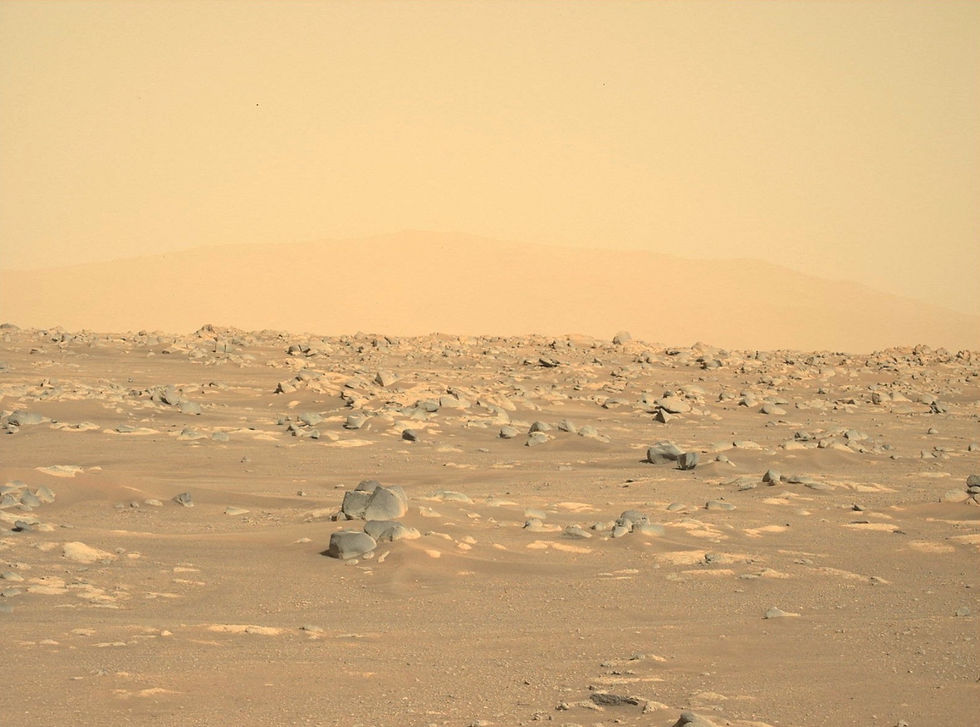Perseverance and Ingenuity
- Zach
- Mar 7, 2021
- 2 min read
At 8:55 pm on the 18th of February*, NASA got confirmation that the Perseverance rover and Ingenuity helicopter had touched down in Jezero Crater on Mars. Together, they will explore Mars for signs of past life, test new technology, and do all kinds of other experiments. It has already started sending back images, and they are incredible.
The Search for Life
One of the main aims of the mission is to search for past life. Perseverance will do this by shining an ultraviolet light on samples and testing the light for evidence of biological molecules, which works because different molecules reflect light in different ways. Perseverance landed in an ancient river, to maximise the chance of finding those special molecules.

New Technology
The Ingenuity helicopter will be one of the new pieces of technology that will be tested on this mission. It will be much better for exploring Mars the a rover because it can fly over rough and dangerous terrain, fly faster than a rover, and take photos from the sky. It will be able to fly for 90 seconds per day, and at a max speed of 36 km/h.

Another new piece of tech being demonstrated is the MOXIE (Mars Oxygen In-Situ Resource Utilization Experiment). It will separate oxygen out of carbon dioxide in Mars's atmosphere, and something similar to this could be used in a few decades to provide oxygen for colonists.

Perseverance also carries microphones, which have recorded the sound on Mars's surface. You can listen to them here.
Also, have a look at the way Perseverance collects samples here.
You can watch the landing below:
*The speed of all electromagnetic waves, including radio waves, is about 300,000,000 m/s (or the speed of light), and the distance between Earth and Mars is huge. This means that we receive information from the rover or helicopter around 11 minutes after it was sent. This makes it impossible to drive a rover or helicopter from Earth, so they have to be autonomous and drive themselves.
It also means that mission control can't do anything if something starts to go wrong during the landing, because it would take them 22 minutes to do anything about it, and the whole landing takes only 7 minutes, which is why Mars landings have been nicknamed "The Seven Minutes of Terror".



Comments